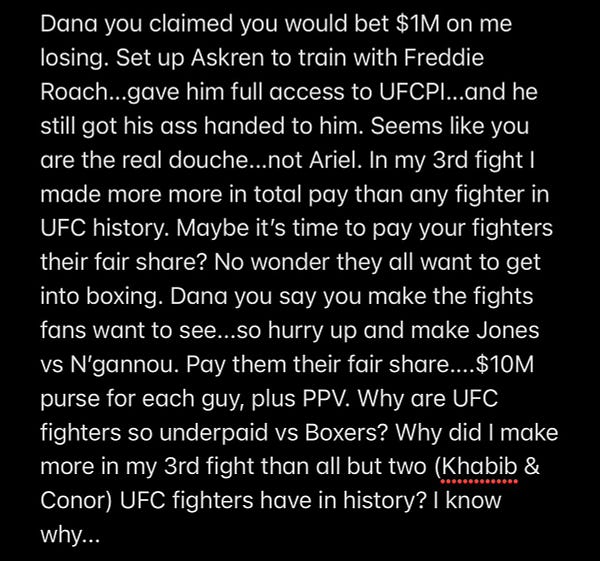Out of Bounds, O'Malley, and OWGR
This Week’s Edition
This week’s edition of Finding the Edge is abbreviated. I planned to analyze historical success in the NFL based on how much money teams spend at each position. I pulled a bunch of data, but it turned out to be incomplete. I’ll be supplementing that dataset throughout the week, and my goal is to share the results in next week’s newsletter.
Out of Bounds
A month has passed since the Open Championship at Royal St. George’s Golf Course, yet one hole continues to stand out to me as a simple and clever test for elite golfers: Hole 14. I am not the only one who appreciates this hole; The Fried Egg has a great article about the strategic value of Hole 14.
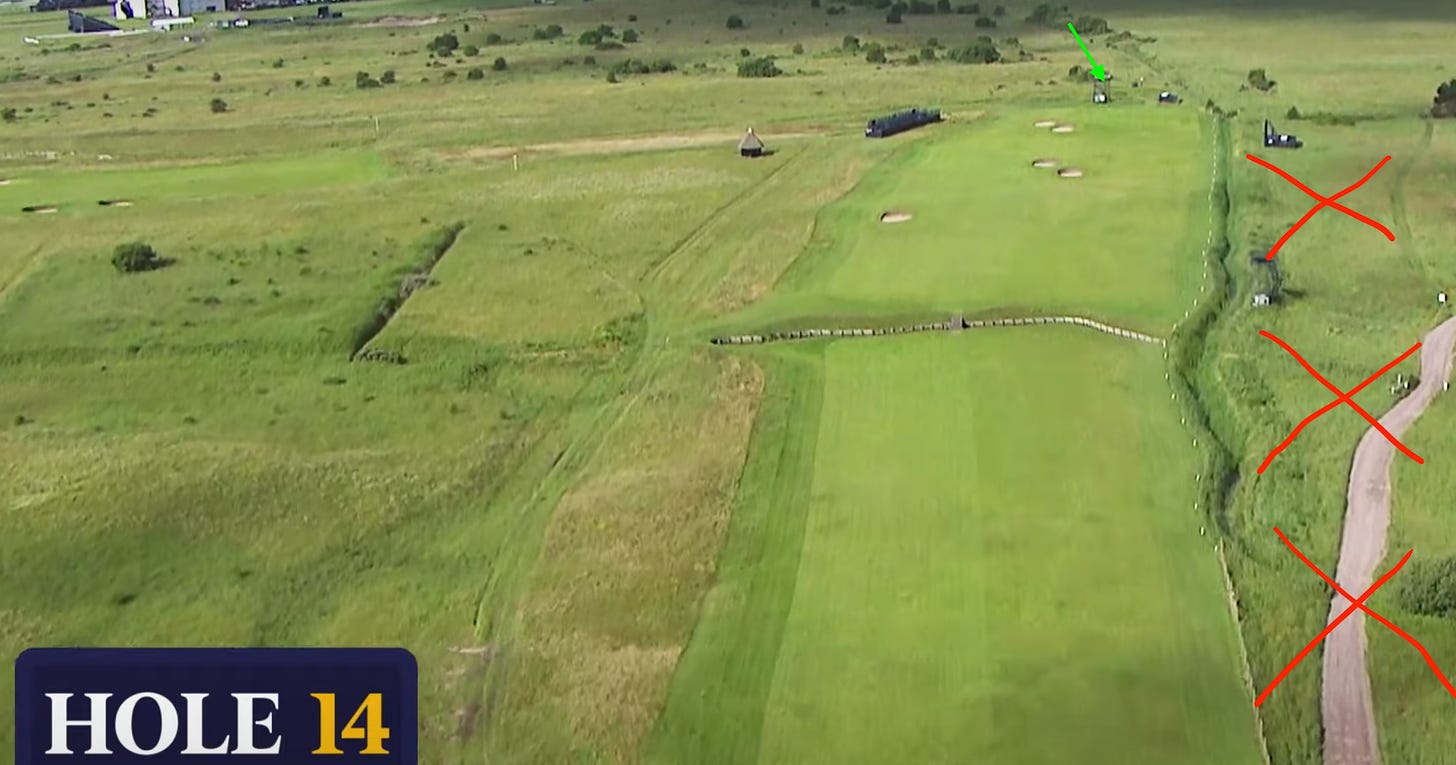
As indicated by the red Xs I’ve drawn in the above screenshot, Out of Bounds lines the right side of the hole. Players who find the Out of Bounds must re-tee and hit their third shot from the tee box, a stiff penalty for an errant tee shot.
The green arrow points to the flag. When players find the left-most edge of the fairway, they are hitting their second shots towards the Out of Bounds to the right of the green. On the other hand, players who find the right side of the fairway have a better angle into the green and contend less with the Out of Bounds. Targeting the right side of the fairway requires taking on risk; your tee shot could go out of bounds. Therefore, an advantageous angle is an appropriate reward for those who brave the risk and find the right side of the fairway.
While I appreciate that the hole offers an advantage to those who find the riskier, advantageous side of the fairway, I like this hole for another reason as well. Accurate players can take more club off the tee than inaccurate players.
The probability of hitting a ball out of bounds mainly depends on two factors: how far the shot travels and how far off target the shot travels. If I hit two shots with different clubs, each shot flying three degrees off target, the shot with the longer club is more likely to go out of bounds.
In the final round of the Open Championship, Collin Morikawa hit 3-wood off the tee on Hole 14. Morikawa was able to hit 3-wood because he is one of the most accurate players in the world. Fearful of the Out of Bounds lining the right side of the hole, Jordan Spieth hit an iron off the tee. Spieth was not comfortable hitting more club than an iron because he is not nearly as accurate as Collin Morikawa is.
Out of Bounds areas pose a threat to elite golfers. When players can completely eliminate the risk of hitting a shot out of bounds, they will. So I was not surprised to see the following tweet during the U.S. Amateur this past weekend:

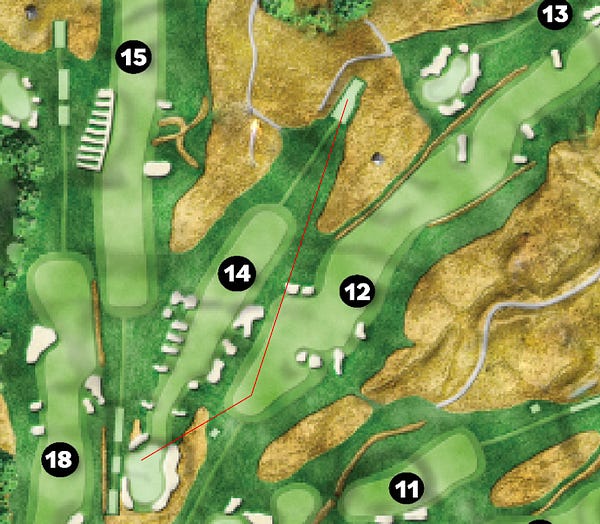
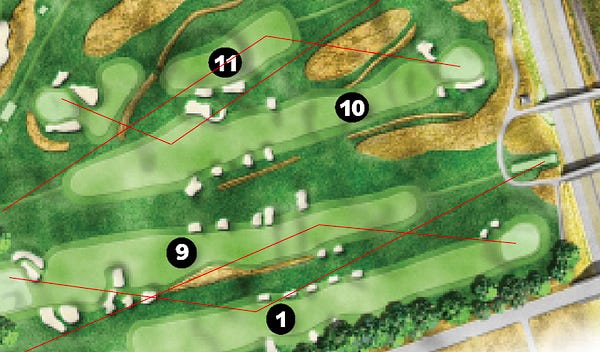
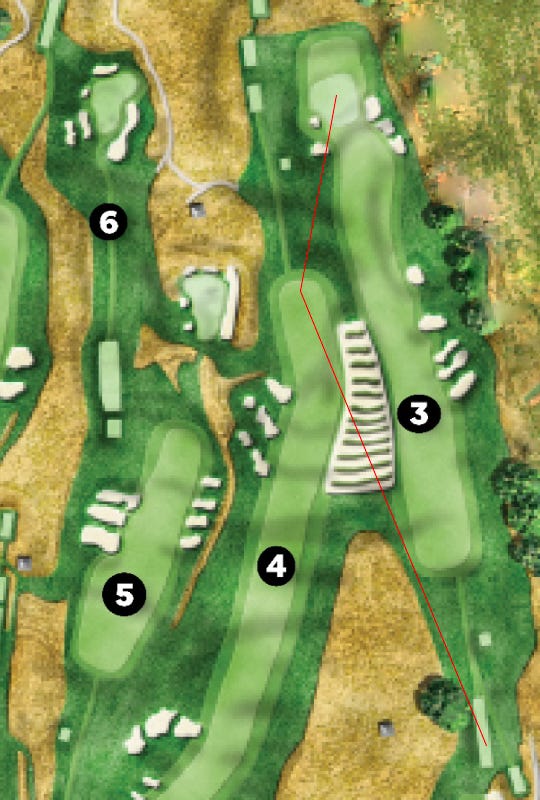
The U.S. Amateur tournament took place at Oakmont Country Club, a classic golf course designed over 100 years ago. Golfers at the U.S. Amateur realized that by aiming down adjacent fairways, they were eliminating risk from tee shots without compromising on reward. Take Hole 1 at Oakmont, for example:


Like Hole 14 at Royal St. George’s, Out of Bounds lines the right side of the hole. Unlike Hole 14 at Royal St. George’s, playing near the Out of Bounds provides little or no benefit to players. Today’s players hit the ball too high and with too much backspin for angles to matter much from 180-190 yards. Therefore, some players elected to remove the possibility of hitting the ball out of bounds and fired tee shots into an adjacent fairway.
With increases in players’ distances and a corresponding decrease in the value of angles, today’s elite golfers will continue to prioritize bombing driver into a safe location that leaves a short iron on the approach over pursuing an advantageous angle near a hazard.
Sean O’Malley
UFC fighters are poorly compensated. Unless you are one of the sport’s biggest fighters, you are not earning huge sums of money at each fight, and you only fight a couple times per year. At any moment, you could suffer a career-ending injury, and when you finish your fighting career, there is no pension plan.
Naturally, there is some tension between fighters and UFC head honchos like Dana White. The sport is growing, and fighters want their pieces of the pie. Back in April, Youtuber-turned-boxer Jake Paul called out Dana White for fighter pay:
And now it is fighter Sean O’Malley publicly feuding with the UFC. O’Malley is one of the biggest draws in the UFC. Fans love O’Malley, who is quickly ascending the ranks.
Sean recently won a big fight in Las Vegas. He and the UFC are communicating to schedule his next fight. For tax and practical reasons, Sean does not want to fight in an upcoming event in New York City despite the UFC’s coercion. So on his podcast last week, O’Malley voiced displeasure for the way the UFC has treated him during the booking process, calling a high-ranking UFC official a “f*cking tool”.
Other quotes from his podcast:
“Why do they have a problem paying someone what they’re worth? That shouldn’t be an issue…They don’t need me. The UFC would be 100 percent fine without me.”
Unfortunately for O’Malley, he answered his own question. The UFC can terminate him and it would not impact their bottom line much.
We’ll see how the UFC deals with O’Malley, but the struggle between star fighters and the UFC organization is not going away.
OWGR
Within golf circles, it’s pretty well-known that the Official World Golf Rankings (OWGR) do not perfectly reflect golfers’ performance. Basically, players on the PGA Tour are disadvantaged in the rankings. The system biases players from tours like the Japan Tour. If you’re interested, here’s an academic paper examining the biases of the OWGR.
In the current system, the number of points at stake in each event is based on the quality of the participants, but each event has a minimum number of points. Event minimums benefitted players on weaker tours like the Japan Tour.
Last week, the OWGR announced that it heard the complaints! Starting in August 2022, in addition to other modifications, the number of points at stake in events will be determined by a Strokes Gained methodology and point minimums are removed.
Overall, the changes are a step in the right direction towards a fair world ranking system. I’m encouraged that the governing bodies collaborated to produce a better solution than the existing system. Now redo the FedEx Cup Points System next!
Contact/Feedback
Email: Joseph.LaMagnaGolf@gmail.com
Twitter: @JosephLaMagna
Other Content from this Past Week
Ernie Johnson speaking to the Alabama football team:
It was nice to see Jenny Taft fire back at Skip Bayless:
On and off the field, Jameis Winston continues to deliver hilarious moments:

MLB’s Field of Dreams concept brought fireworks:
Chesson Hadley’s post-round interview after securing his career:

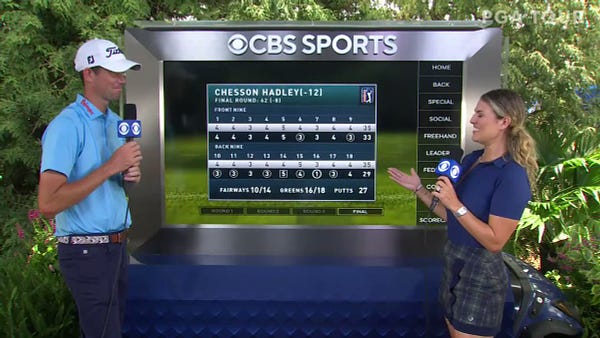
A proper embodiment of the spirit of golf:




